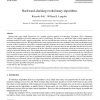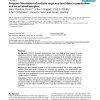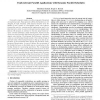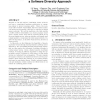292 search results - page 43 / 59 » Dormant program nodes and the efficiency of genetic programm... |
ICDE
2006
IEEE
14 years 9 months ago
2006
IEEE
Wireless sensor networks generate a vast amount of data. This data, however, must be sparingly extracted to conserve energy, usually the most precious resource in battery-powered ...
AI
2006
Springer
13 years 7 months ago
2006
Springer
Starting from some simple observations on a popular selection method in Evolutionary Algorithms (EAs)--tournament selection--we highlight a previously-unknown source of inefficien...
BMCBI
2008
13 years 7 months ago
2008
Background: FREGENE simulates sequence-level data over large genomic regions in large populations. Because, unlike coalescent simulators, it works forwards through time, it allows...
IPPS
2005
IEEE
14 years 1 months ago
2005
IEEE
Commodity computer clusters are often composed of hundreds of computing nodes. These generally off-the-shelf systems are not designed for high reliability. Node failures therefore...
MOBIHOC
2008
ACM
14 years 7 months ago
2008
ACM
Because of cost and resource constraints, sensor nodes do not have a complicated hardware architecture or operating system to protect program safety. Hence, the notorious buffer-o...




